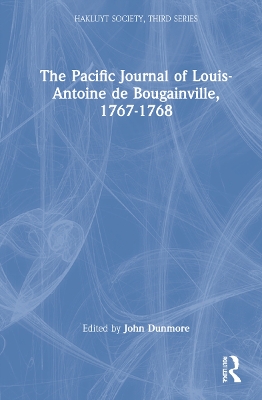The French entered the Pacific in the late 17th century, but the ocean remained largely a Spanish preserve until British navigators began to cross its vast expanse in the mid 1760s. France's concerns that Britain might establish its superiority in the area, meant they welcomed Louis de Bougainville's voyage of exploration undertaken in 1766-9. After handing over the colony he had established in the Falkland Islands to Spain, he sailed through the still relatively unknown Straits of Magellan into the poorly charted South Pacific. He made a number of discoveries in the south west, but was too late to discover Tahiti, where Samuel Wallis had preceded him by less than a year. Reports on Bougainville's reception there and on life in the island were to create wide interest and controversy in Europe. He then sailed to the Samoan Islands and on to Vanuatu, as far as the Great Barrier Reef, and north towards New Guinea and the Samoan Islands making a number of discoveries and all the while leaving his name to a number of features, the best known of which are the island of Bougainville and the Bougainvillea flower. He returned home by way of the Dutch East Indies and the Indian Ocean. Although Bougainville published an account of his voyage in 1771, his original journal was published only in 1977; the present volume makes the latter text available for the first time in English translation.
- ISBN10 0904180786
- ISBN13 9780904180787
- Publish Date 28 May 2003
- Publish Status Active
- Publish Country GB
- Publisher Taylor & Francis Ltd
- Imprint Ashgate Publishing Limited
- Format Hardcover
- Pages 400
- Language English
